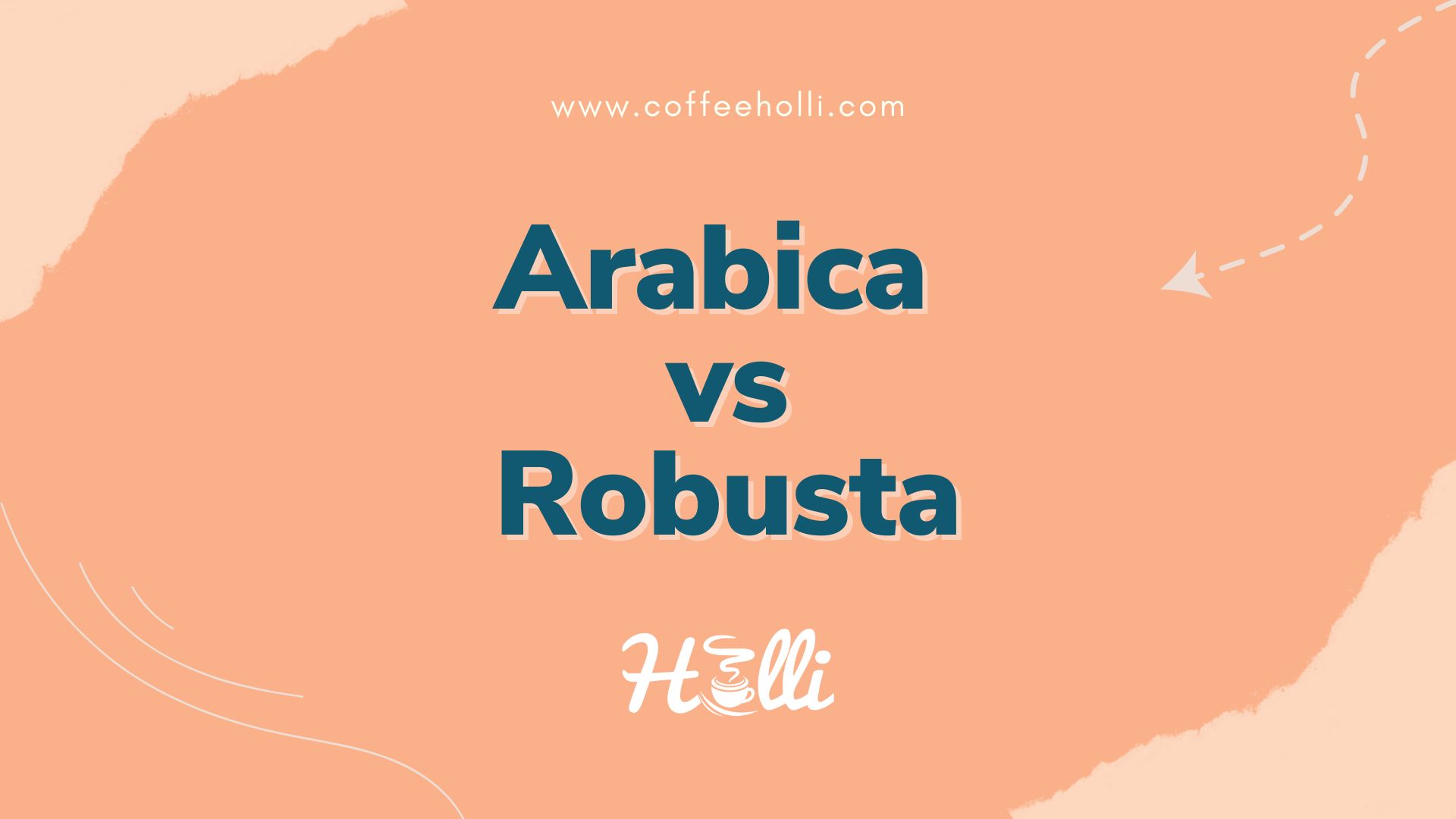Have you ever wondered why coffee tastes different?
Overall, various coffee flavors depend on the handling (i.e. processing, roasting, grinding, and brewing) more than the coffee type.
But, even so, it wouldn’t be right to downplay how different coffee types affect the final flavor of your cup of joe.
That said:
You should note that there are over 120 coffee tree species; with Arabica and Robusta accounting for 99% of all commercially grown coffee.
Intriguing, right?
That’s what this post is all about.
Below, I’ll do an Arabica vs Robusta comparison to see why these coffee types are so popular and how they differ from each other.
So, what are you waiting for? Let’s dive in…
Table of Contents
Understanding the Basic Differences
Well:
Starting with their names, Arabica and Robusta beans differ in many ways.
However, their most notable differences include taste, caffeine content, shape, and size. More so, each of these bean types thrives (or is grown) in specific areas and altitudes.
Again:
Which one’s the best and why?
Let’s take a closer look at each…
Arabica Coffee Beans (aka Coffea arabica)
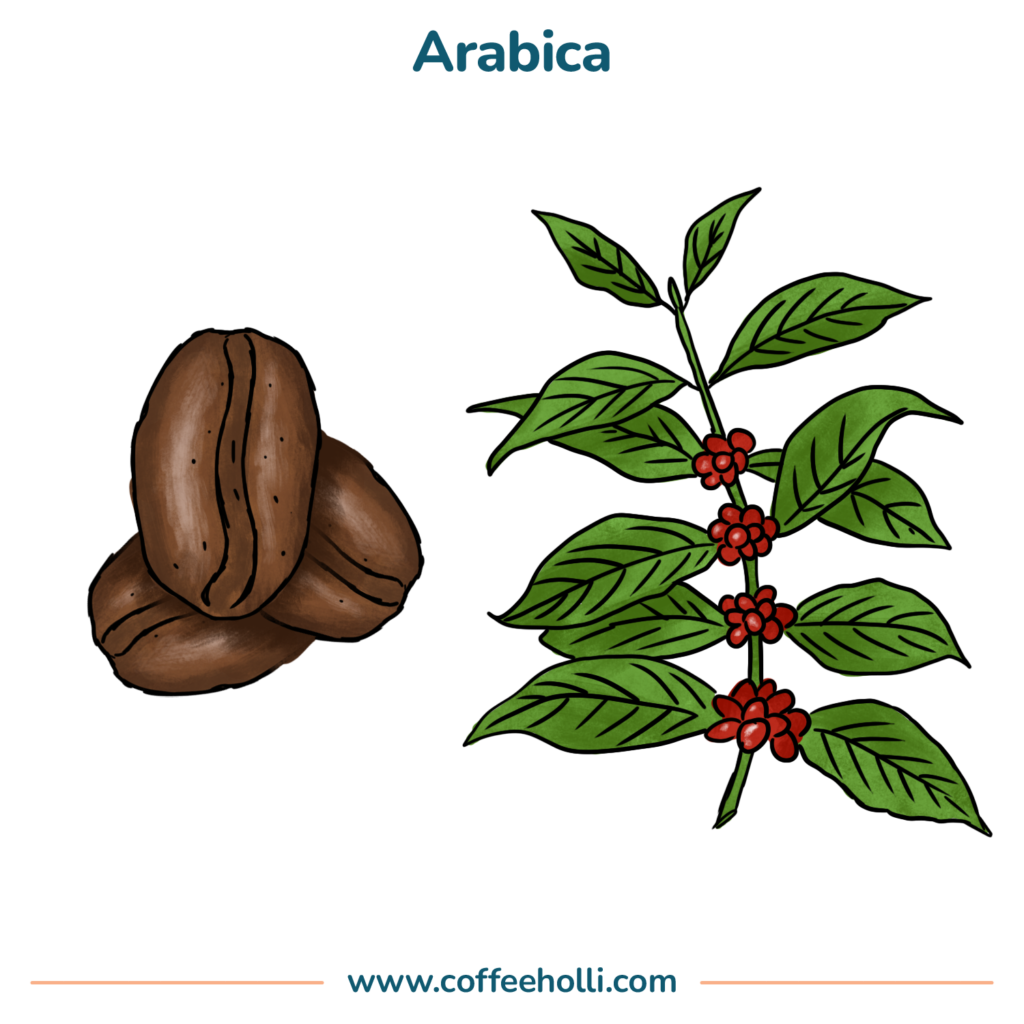
Get this:
Accounting for around 60% of global coffee production, Arabica is the most prominent coffee type in existence.
These oblong-shaped beans are known to be sweeter and fruitier with a richer, more complex, and superior flavor profile.
This is probably why many coffee lovers give it a higher preference over Robusta.
Now:
Taste aside, Arabica beans are also highly acidic but with a little less caffeine than what you’ll get in other bean types.
Moreover, these beans are known to be more nutritious and gloriously aromatic.
Got it?
Robusta Coffee Beans (aka Coffea canephora)
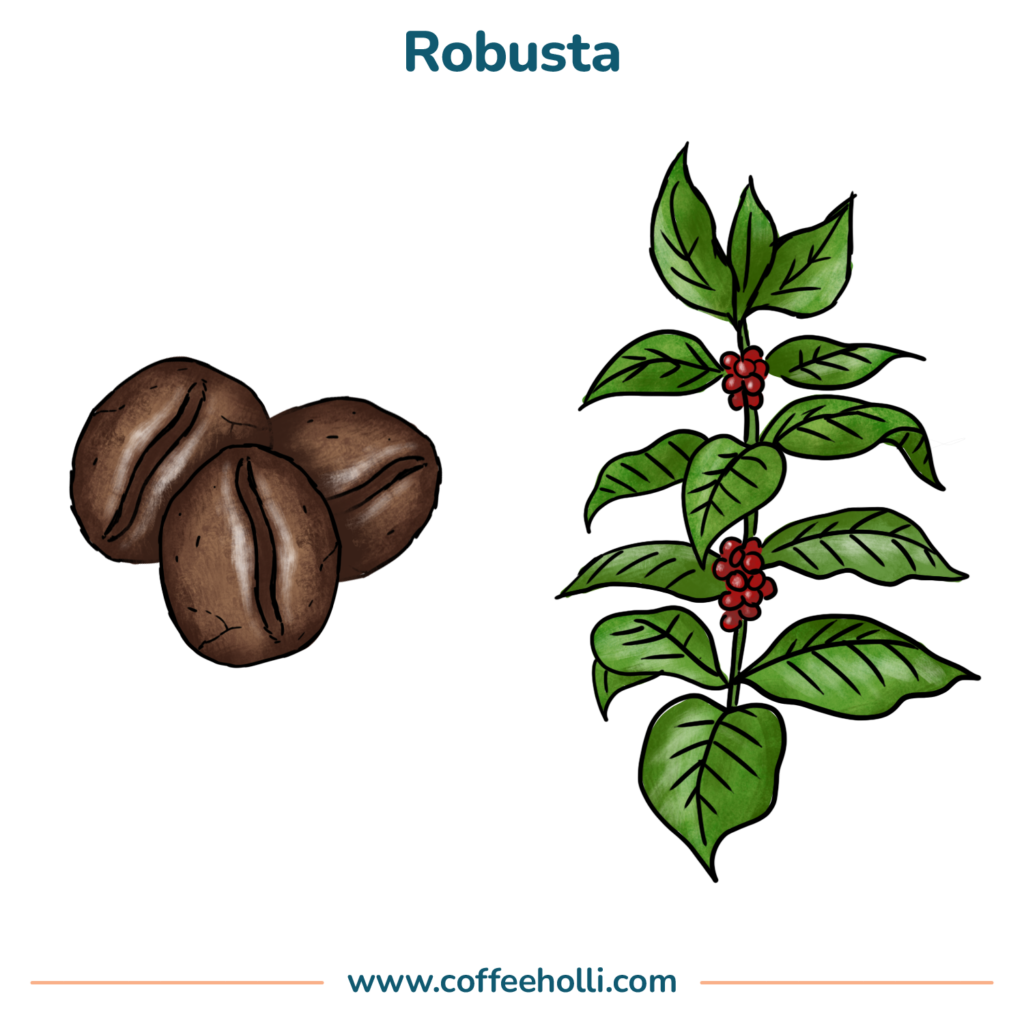
Get this:
One of the easiest ways to differentiate between Arabica and Robusta coffee beans is by looking at their sizes and shapes.
Typically, Arabica seeds are usually slightly bigger with an oblong or simple elliptic-ovate shape. On the other hand, Robusta beans are slightly smaller and usually have a more defined oval shape.
So, yes.
It’s easy to tell between the two just by looking at them. But if that proves difficult, taste comes next.
Unlike Arabica beans, Robusta is known to have a harsh, punchy, bitter, and woody flavor. And since it’s less acidic, its taste profile is often considered inferior compared to the former.
But:
On the plus side, it does produce better crema than Arabica coffee brews.
Moreover, Robusta coffee beverages are known to pack quite the punch. That’s because this bean type contains twice the amount of caffeine than Arabica.
Quick Comparison & Composition Summary
| Quality | Arabica | Robusta |
|---|---|---|
| Market Share | 60 % | 38 % |
| Maximum Tree Height | 12 m (39 ft) | 10m (33 ft) |
| Optimal Growth Temperature | 15 to 24 °C (or 59 to 75 °F) | 18 to 36°C (or 64 to 97°F) |
| Price Range | $$$ | $$ |
| Sensitivity | Highly Sensitive | Impressively Immune |
| Bean Shape and Size | Oblong and Slightly Bigger | Oval and Slightly Smaller |
| Acidity | High | Low |
| Caffeine Content | 1.5% | 2.7% |
| Sugar Content | 6 to 9% | 3 to 7% |
| Taste Profile | Juicy, Sweet, and Superior Flavor | Bitter, Rubbery, and Woody Flavor |
History and Cultivation
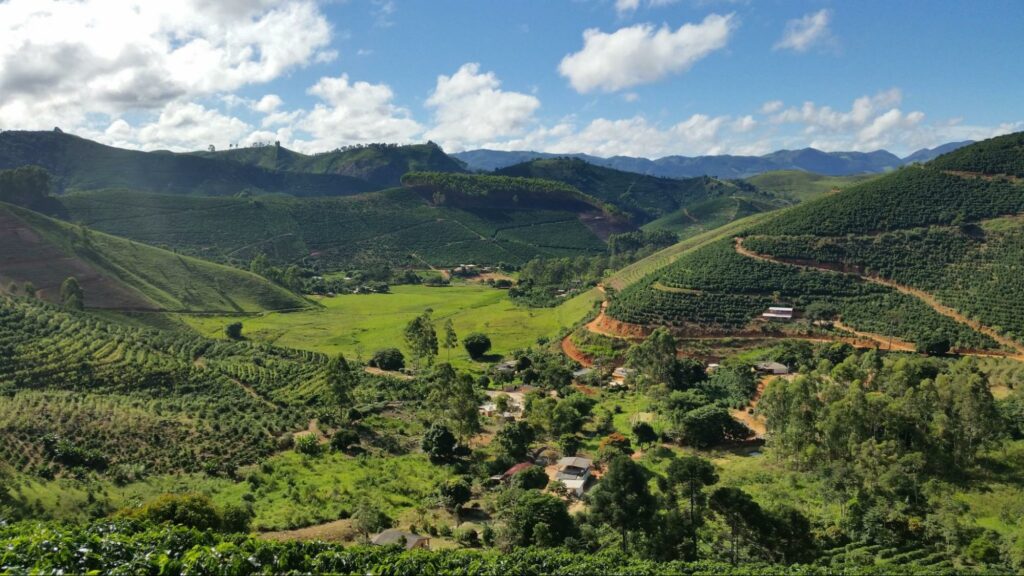
Now, the history of coffee is a bit interesting.
Get this:
Arabica was the first type of coffee to be discovered, cultivated and consumed.
And despite being endemic to the Ethiopian Highlands, Arabica (or Arabic Coffee) was first cultured and brewed in Yemen.
So, while it’s true that coffee originated from Ethiopia, the plant’s early cultivation and consumption as a beverage was in the Arabian Peninsula.
That said:
Arabica plants do well in high-altitude areas (preferably 1 000 to 2 100 m); ideally, in a medium/subtropical climate with ample humidity.
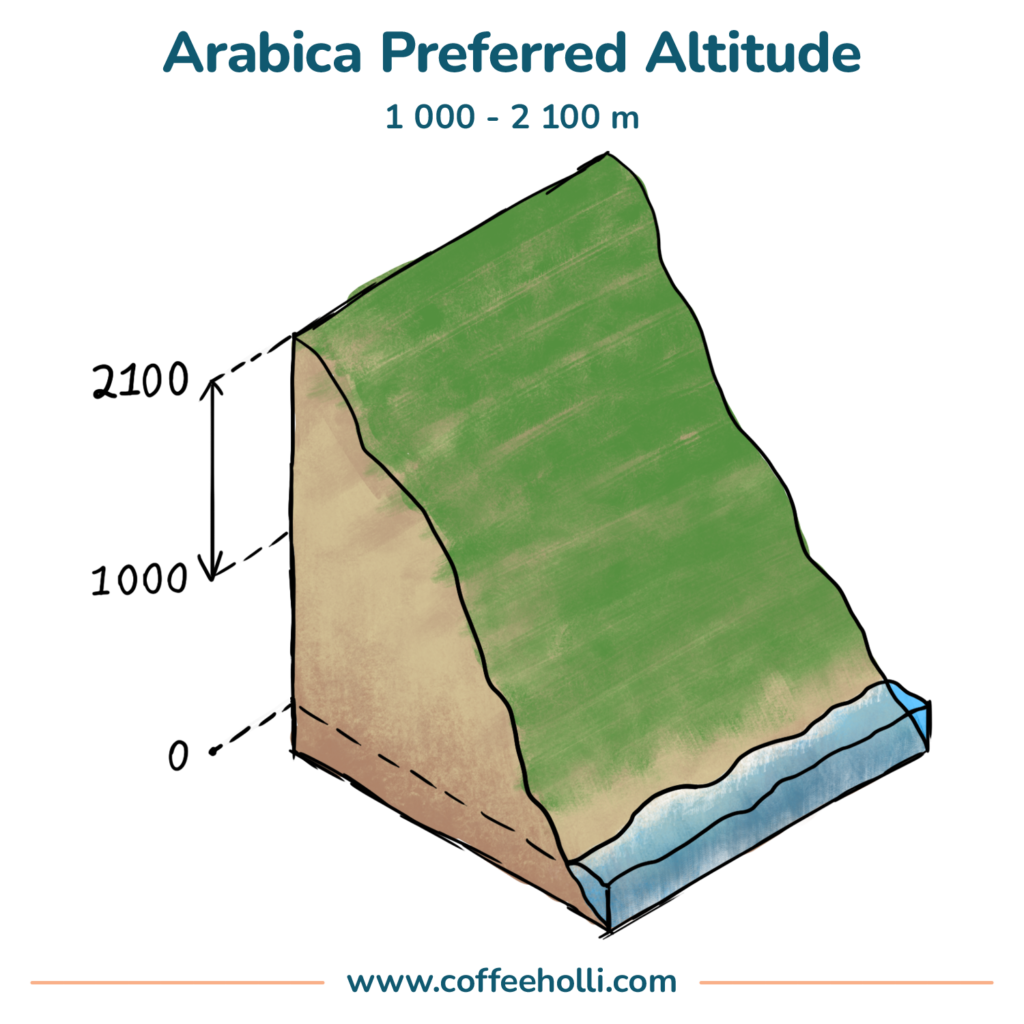
What about Robusta Coffee?
Well, in spite of being more resilient, high yielding, and affordable to grow, Robusta isn’t as popular as Arabica coffee.
Robusta is mostly grown in Vietnam but traces its roots to Central and Western Africa. Interestingly, it was recognized as a coffee type in 1897.
Now:
Unlike Arabica, Robusta coffee can thrive in harsher, inconsistent climates. This type grows well in lower altitudes (Sea Level to about 1000m).
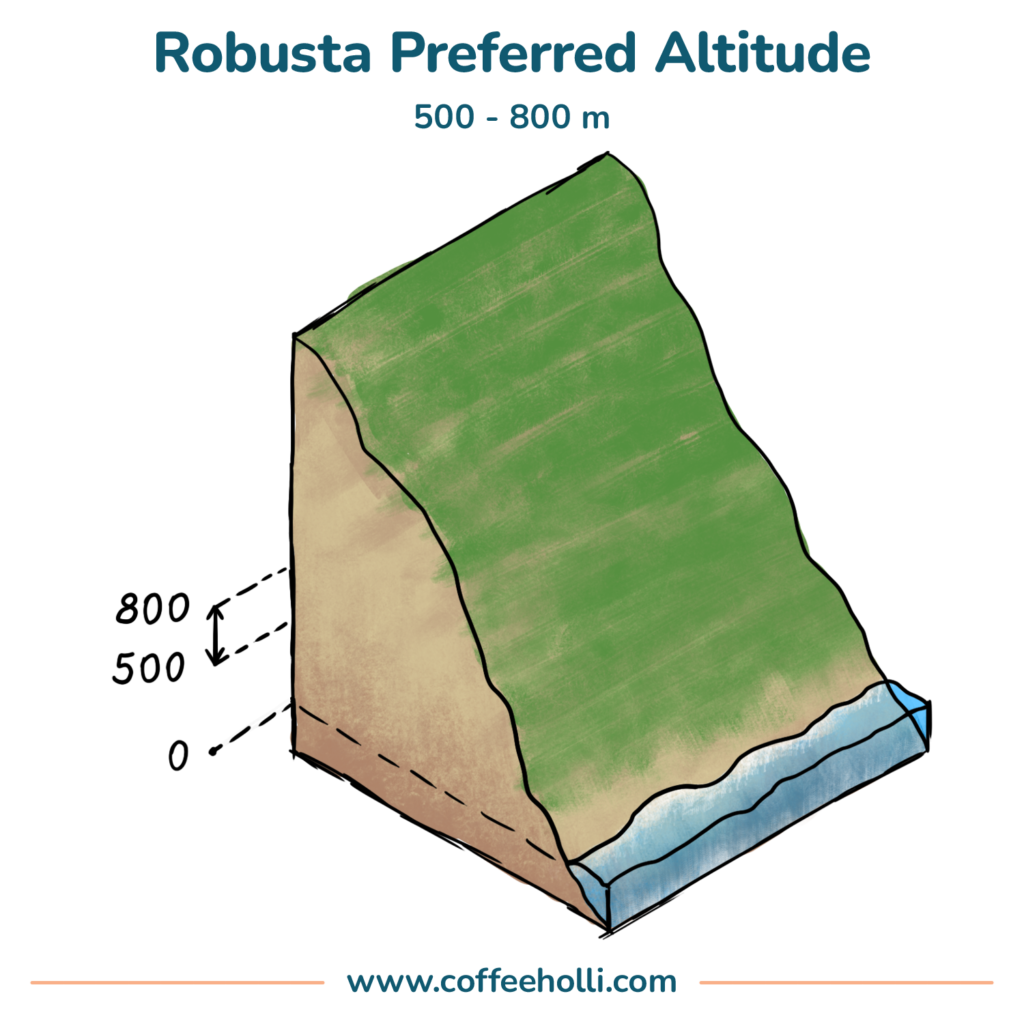
And that’s why it’s easier and cheaper to grow it.
Note:
Despite the ability of both Arabica and Robusta trees to grow over 9m tall, most farmers opt to keep them short (2 to 3m) to ease harvesting.
Top 10 Global Coffee Producers
So, the main question here is…
Who produces each coffee type?
Technically:
There are over 50 countries that grow and export coffee globally. However, here are the top ten coffee producers; including their main coffee type export (2019 report).
| Global Rank | Country | Average Production (Metric Tons) | Coffee Type |
|---|---|---|---|
| 1 | Brazil 🇧🇷 | 2,652,000 | Both Arabica and Robusta |
| 2 | Vietnam 🇻🇳 | 1,650,000 | Robusta |
| 3 | Colombia 🇨🇴 | 810,000 | Arabica |
| 4 | Indonesia 🇮🇩 | 660,000 | Both Arabica and Robusta |
| 5 | Ethiopia 🇪🇹 | 384,000 | Arabica |
| 6 | Honduras 🇭🇳 | 348,000 | Arabica |
| 7 | India 🇮🇳 | 348,000 | Both Arabica and Robusta |
| 8 | Uganda 🇺🇬 | 288,000 | Both Arabica and Robusta |
| 9 | Mexico 🇲🇽 | 234,000 | Arabica |
| 10 | Guatemala 🇬🇹 | 204,000 | Both Arabica and Robusta |
Fun Fact:
The title for “Best Quality Coffee Beans” goes to Colombia – one of the world’s leading producers of Arabica coffee.
In Summary…
We can all agree:
Arabica and Robusta coffee types have proven their worth in the battle of bean superiority. And despite popular opinion tilting in favor of the former, the latter does offer unique perks.
That said:
Which one’s your favorite?
Well, let me know why including any questions you may have in the comments section below.
Frequently Asked Questions about Arabica vs Robusta Coffee
Starbucks only deals with coffee Arabica.
Despite Arabica being superior in taste, Robusta beans are often considered healthier owing to their low acidity and abundance of antioxidants.
Arabica coffee is sweet, rich in flavor, cocoa-like, and more complex than Robusta in terms of taste. The latter has an earthy, rubbery, and woody taste profile.
Nescafe uses both Arabica and Robusta coffee beans to achieve different flavors and grind/roast qualities.

